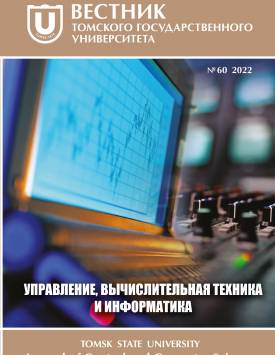Binary classification for wells of oil and gas field with the use of deep neural networks
The well-stock of the oil and gas extraction enterprise only on one field can include hundreds and even thousands of wells. The management of such well-stock demands considerable labor and time expenditure of qualified specialists of the extracting enterprise. They have to analyze large volumes of diverse geological and technological data. Part of the tasks solved by specialists at the management of a well-stock, including the management of the geological and technical arrangements (GTA) on the well-stock, are loosely formalized tasks. Intellectual methods of decision-making support are extremely necessary for experts for their solving. The analysis of research results in the field of intellectual methods for well-stock management showed that artificial neural networks (ANN) are generally applied. The first encouraging results are received using ANN, however, only partial tasks are solved and the accuracy of the received results is not high. It indicates the relevance of the development of new models and methods of intellectual data analysis for high-automated management of the well-stock. The problem of candidates-wells selection for the GTA on a well-stock which can be simplified to the task of binary classification of production wells is considered in the article. It is offered to solve it with the use of the developed models of deep feed-forward ANN. Historical data from well-stocks of oil and gas-condensate fields of the Tomsk region are used as basic data for preparation of the training and evaluating selections for the ANN model The adaptive algorithm of preliminary processing of such data is developed, taking into account specifics of basic technological and geological data on the well-stocks. The training and evaluating selections for the offered ANN models are created with the algorithm's help. The following architectural characteristics and hyper-parameters varied at the research of efficiency of the ANN models: the set of the input parameters, the number of the hidden layers, an activation function, a training speed, an optimizing training algorithm, etc. Research results of the set of the offered ANN models on the prepared training and evaluating selections on the production well-stocks of these two fields showed that there is a subset of the ANN models allowing to receive high (98,5 % and above) the precision of classification of candidates-wells for GTA, acceptable for practical use on oil and gas fields at GTA management. These results also emphasize adequacy of the revealed subset of the ANN models of the complexity of the solved classification task without dependence on the prevailing fluid in the got raw oil and gas products on a field and the geological structure of a field. It is shown that the ANN models, trained on the joint selection by data from well-stocks of production wells of two fields, generally give more a good result on the accuracy of classification of wells, than in the case of their training on data from one field. Contribution of the authors: the authors contributed equally to this article. The authors declare no conflicts of interests.
Keywords
a candidate-well for carrying out geological and technical arrangements on a well-stock, intellectual analysis of data, the binary classification of wells, the models of artificial neural networksAuthors
| Name | Organization | |
| Evsyutkin Ivan V. | Tomsk Polytechnic University | ivel@tpu.ru |
| Markov Nikolay G. | Tomsk Polytechnic University | markovng@tpu.ru |
References

Binary classification for wells of oil and gas field with the use of deep neural networks | Vestnik Tomskogo gosudarstvennogo universiteta. Upravlenie, vychislitelnaja tehnika i informatika – Tomsk State University Journal of Control and Computer Science. 2022. № 60. DOI: 10.17223/19988605/60/8
